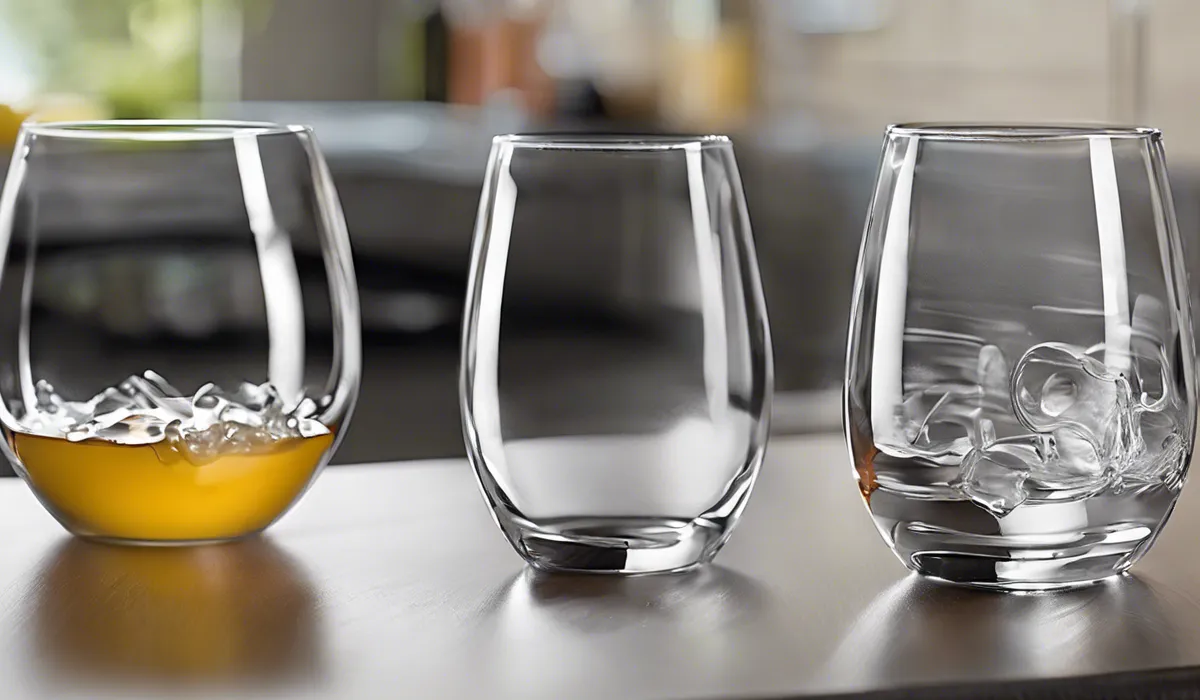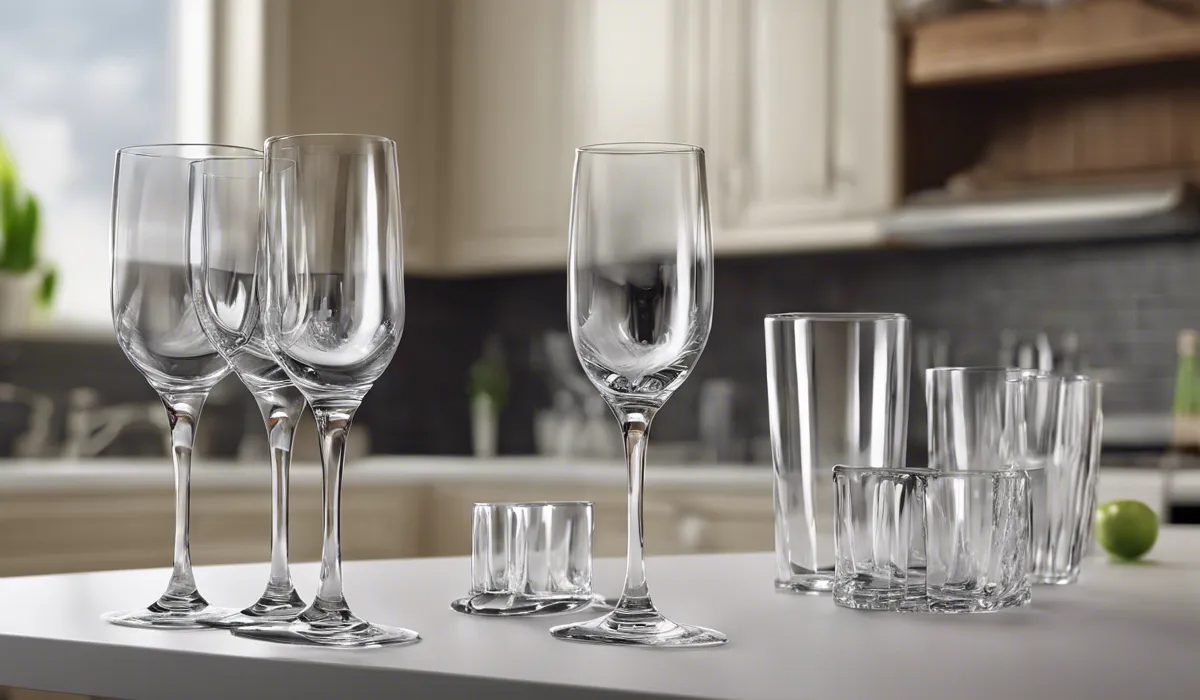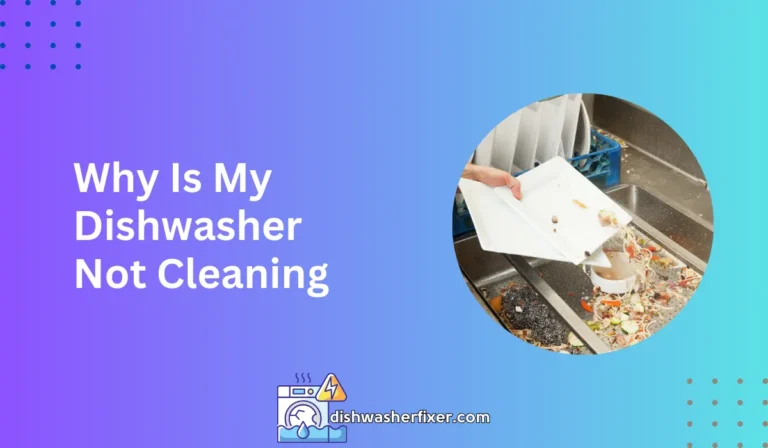How to Remove Dishwasher Marks from Glasses: Shine Tips
To remove dishwasher marks from glasses, use white vinegar. Soak a cloth in vinegar, wrap it around the stained area, and let it sit for 15 minutes. Rinse under cold water and dry with a lint-free cloth for a clear shine.
Understanding Dishwasher Marks on Glasses

What Are Dishwasher Marks?
When unloading your dishwasher, you might notice your glasses aren’t as sparkling as you’d expect. Instead, they have cloudy marks or streaks.
These are known as dishwasher marks, and they are caused by a variety of factors, including water composition and the cleaning process.
Hard Water Stains vs. Detergent Residue
There are two main types of dishwasher marks. Hard water stains appear as a result of minerals like calcium and magnesium in your water, while detergent residue is a filmy layer left by dishwasher soap.
Both can dull the appearance of your glasses but require different approaches to remove effectively.
Contributing Factors to Dishwasher Marks
Several factors contribute to the appearance of dishwasher marks on glasses.
These include the hardness of your water, the type and quality of detergent you use, the settings on your dishwasher’s rinse aid dispenser, and the temperature of the water during the rinse cycle.
Each of these can impact the cleanliness and clarity of your glassware.
Water Hardness and Its Impact
Water hardness is a common culprit when it comes to dishwasher marks. Minerals found in hard water can build up on glassware during the wash cycle, leaving behind unsightly stains that are difficult to remove.
The Role of Detergent Quality
The detergent’s quality can also lead to dishwasher marks. Cheap or ineffective detergents may not fully dissolve or could react negatively with the minerals in hard water, further exacerbating the issue.
Rinse Aid Settings and Temperature Effects
Incorrectly adjusted rinse aid settings and the water temperature during the rinse cycle are also key factors. If the rinse aid is not released adequately, or if the water is not hot enough to dissolve residues, marks may remain on your glassware.
Preventive Measures to Avoid Dishwasher Marks

The Importance of Water Softeners
In areas with hard water, installing a water softener can be a game-changer. Water softeners remove the minerals responsible for hard water stains, keeping your glasses clear and extending the life of your dishwasher.
Selecting the Right Detergent and Rinse Aid
Choosing the correct detergent and rinse aid is crucial, especially for households with hard water. There are products specifically formulated to work in such conditions, and using them can prevent those pesky dishwasher marks.
Proper Loading Techniques
How you load your dishwasher can impact the cleanliness of your glasses. Ensure adequate space between items so water can circulate freely, and place glasses so that they do not interfere with the spray arms’ movement.
Regular Dishwasher Maintenance
Maintaining your dishwasher is also essential. Regularly clean and descale your machine, and check the spray arms and filters to ensure they’re not clogged. This not only helps in preventing marks but also in maintaining your dishwasher’s efficiency.
Methods for Removing Dishwasher Marks from Glasses

Vinegar Soak and Rinse Method
One of the simplest home remedies for removing dishwasher marks is using white vinegar. Soak a cloth in vinegar, wrap it around the stained area on the glass, and let it sit for about 15 minutes.
Afterwards, rinse the glass under cold water and dry it with a lint-free cloth for a clear, shiny finish.
Baking Soda Scrub Technique
Baking soda can be used for tougher stains. Create a paste with water and baking soda, apply it to the affected areas, and gently scrub. This mild abrasive can help remove stubborn marks without scratching your glasses.
Using Commercial Products
There are also commercial products available that are designed to tackle dishwasher marks. They’re usually easy to use; just follow the instructions on the packaging for the best results.
Hand-Washing Tips for Glassware
If you prefer to hand-wash your glasses, using the right tools and techniques is vital. Soft sponges or microfiber cloths are gentle on glass surfaces, and certain washing techniques can ensure a streak-free finish.
When to Seek Professional Help
There are times when home remedies may not be enough to remove persistent marks.
If you’ve tried everything and the marks won’t budge, it might be time to seek professional help or consider replacing your glassware, especially if the glass has become etched.
FAQs About Removing Dishwasher Marks from Glasses
What is an effective home remedy for removing dishwasher marks from glasses?
An effective home remedy is using white vinegar to soak a cloth, which is then wrapped around the stained area for 15 minutes before rinsing.
How long should vinegar be left on glasses to remove dishwasher marks?
Vinegar should be left on the glasses for about 15 minutes to effectively remove dishwasher marks.
What type of cloth is recommended to dry glasses after removing dishwasher marks?
A lint-free cloth is recommended for drying glasses to ensure a clear shine without leaving any residues.
Is it necessary to rinse the glasses after treating them with vinegar?
Yes, after treating the glasses with vinegar, they should be rinsed under cold water to remove any vinegar residue.
Can vinegar damage glasses or remove their shine?
No, when used properly, vinegar will not damage glasses or remove their shine; it is a safe and effective cleaning agent for glassware.
Final Thoughts
To effectively eliminate dishwasher marks from glasses, utilize white vinegar. Immerse a cloth in the vinegar, then drape it over the stained area for a 15-minute period.
Follow up by rinsing with cold water and then drying off the glass using a lint-free cloth to restore its sparkling clarity.





